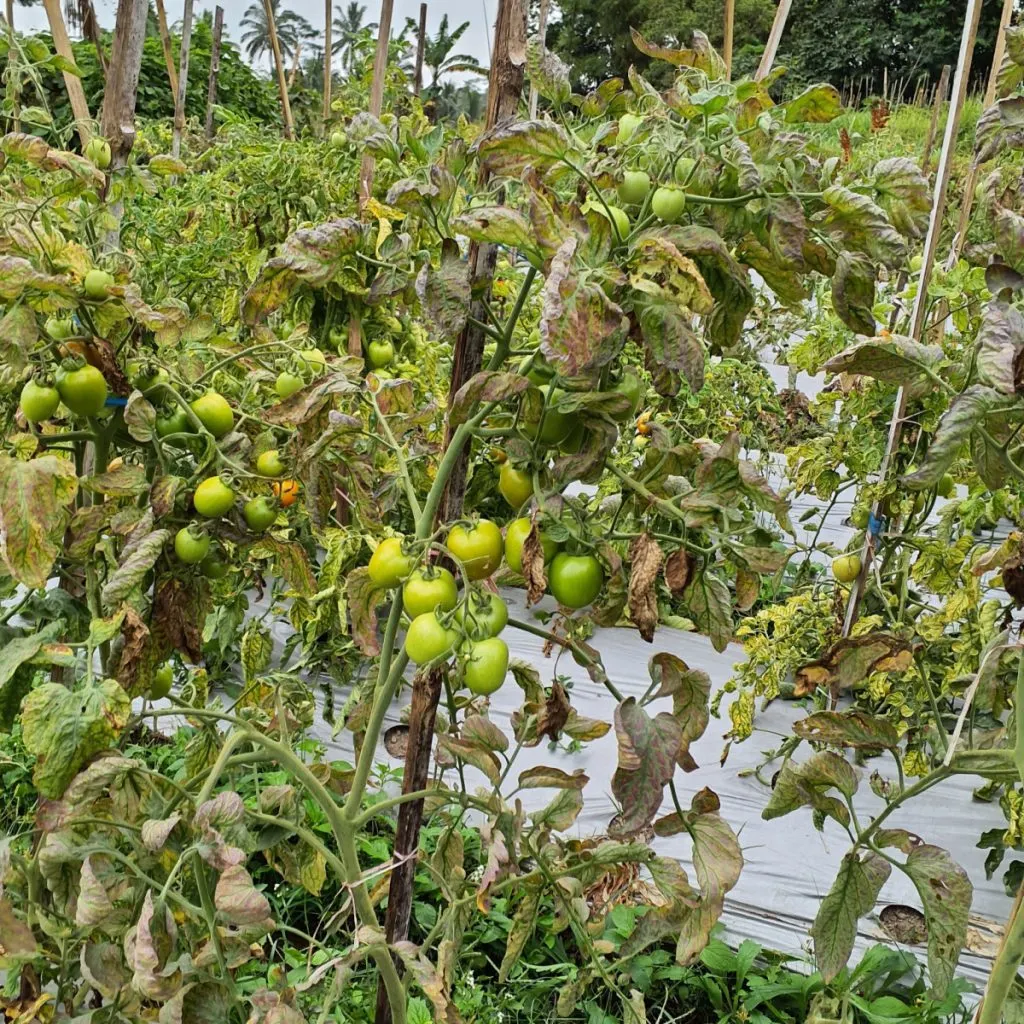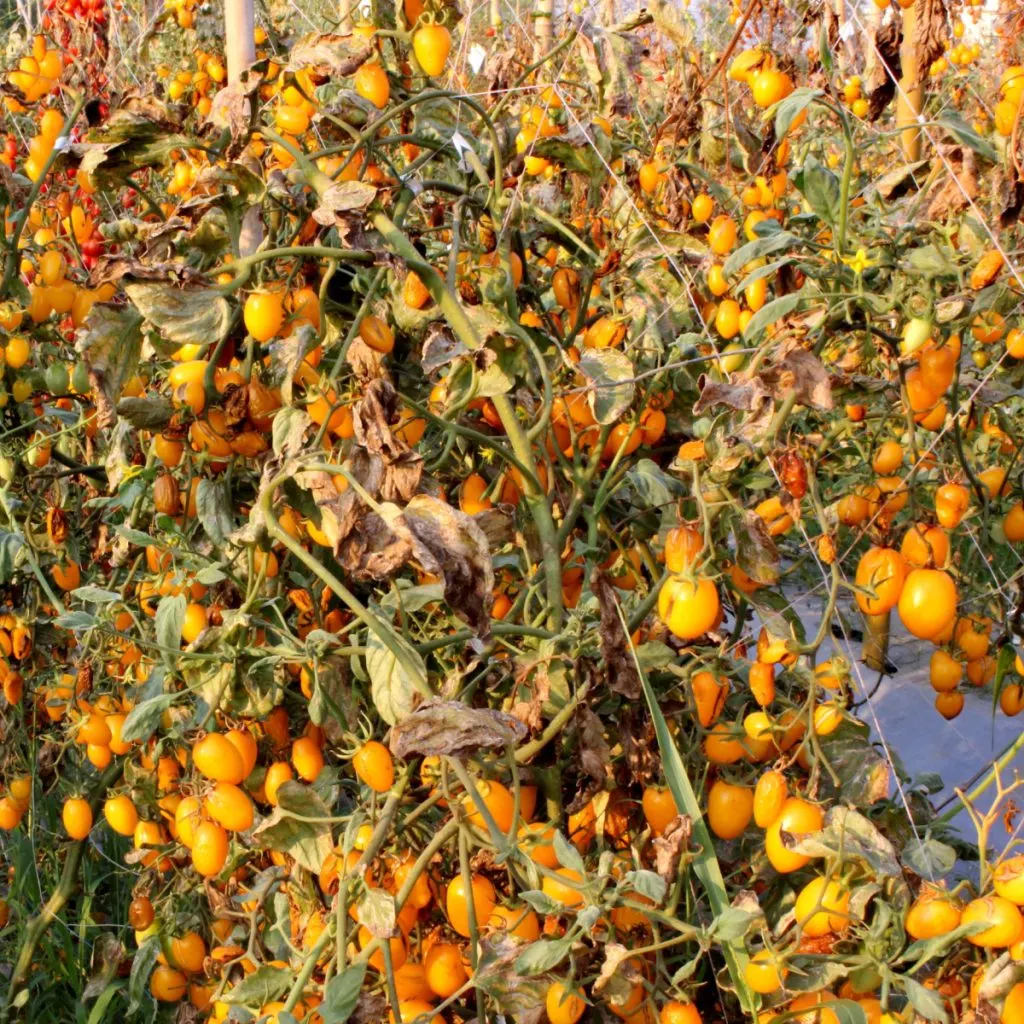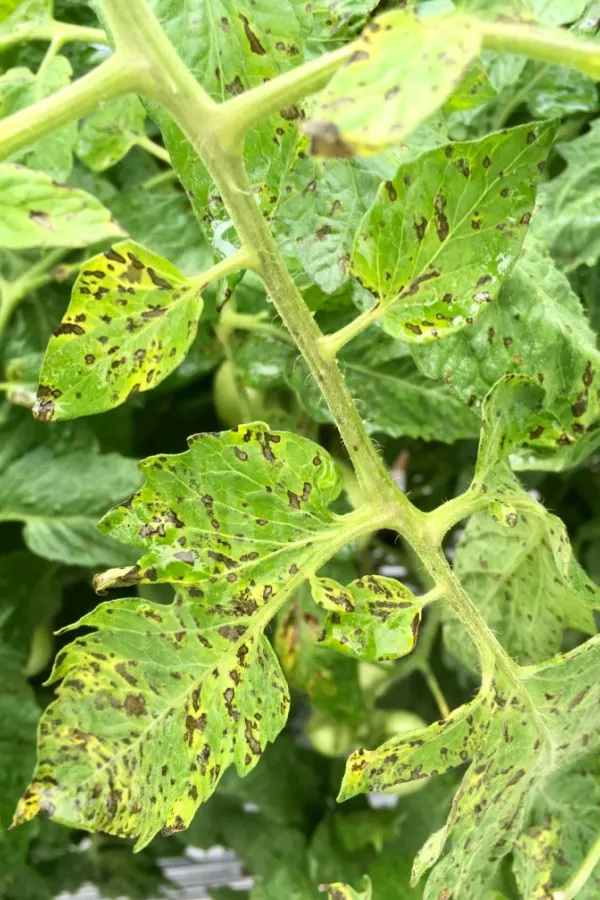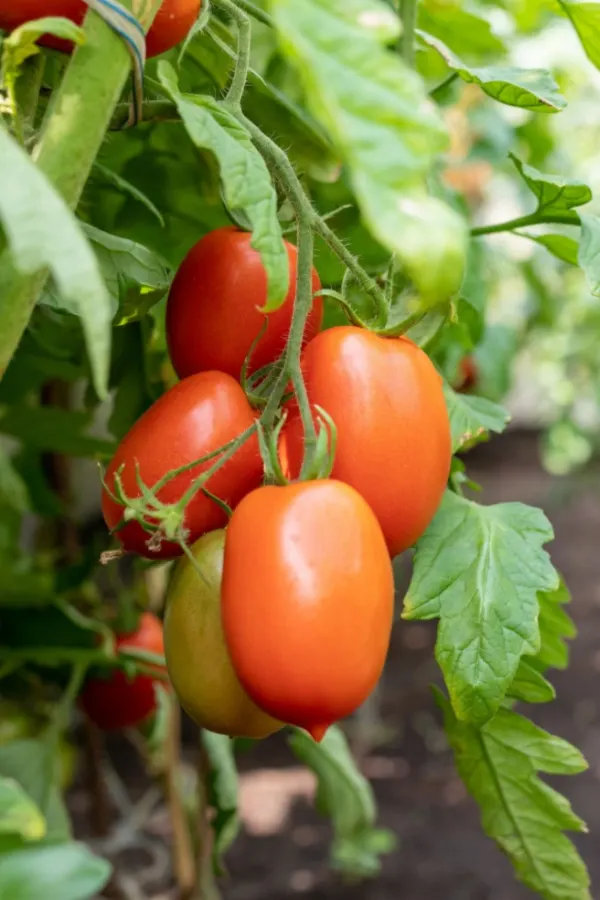Did you know that what you do this fall can help next year’s tomato plants to grow far healthier, stronger and better next year? In fact, how you handle your dying tomato plants and your soil can play a big role in how all the vegetables in your garden grow and thrive next year!
Tomatoes are one of the most popular garden crops. With so many different flavor profiles, growth habits, and even appearances, they are a must-have for most gardeners. However, they might not always perform how you expect, especially if you have been growing them year after year.
Maybe your plants struggle with tomato blight or other diseases. Maybe they are constantly getting attacked by pests or have a lack of blooms and fruit. Whatever the issues, if you notice that your tomato crop has been struggling, it might not be what you are doing while they grow. Instead, it’s likely the steps you are taking – or not taking – in the fall that are hurting your crops.

4 Things You Can Do This Fall To Help Next Year’s Tomato Plants Grow Better!
#1 Remove Old Plants As Soon As Possible
As summer winds down and fall weather arrives, tomato plants start to die off. While this might not seem like a bad thing, allowing your tomato plants to naturally wither away in their growing space makes them much more susceptible to diseases.
Weak tomato plants are often targets for fungi, mold, and other diseases and pathogens. Unfortunately, these issues don’t just affect the plant tissue. In fact, they also end up in the soil around the plants as well. Then, when spring arrives, all of those diseases and issues are waiting to affect your new crops – whether they are tomatoes or not.
In addition, insects and other pests also target weak tomato plants. Many of these pests overwinter or lay their eggs on decaying plant matter or in the surrounding soil. As the weather warms up next year, a new infestation is just waiting to wreak havoc on your spring crops.
So, to prevent this vicious cycle of diseases and pests from continuing, you need to remove your old and diseased tomato plants in the fall – roots and all.
Don’t Forget The Tomatoes! 4 Things You Can Do This Fall To Help Next Year’s Tomato Plants
In addition to removing all the plant matter, you also need to remove any and all dropped tomato fruit. Every tomato is packed full of seeds just waiting to germinate and take hold. If you leave them in the fall to decompose in the soil, you will likely end up with hundreds of volunteer tomato plants next year.

While it might not sound like a problem to have new tomato plants for free, most of these seeds won’t turn into healthy plants. And unless they are from heirloom crops, the plants won’t even be the same variety as the parent plant.
To combat this, remove all of the fallen fruit as soon as it falls off the plant. (If you want to see how to properly save tomato seeds that will produce healthy tomato plants, see “How To Save Heirloom Tomato Seeds”.)
#2 Don’t Compost Old Plants – 4 Things You Can Do This Fall To Help Next Year’s Tomato Plants
Once you pull all of those old, dying tomato plants, what do you do with them? One thing is for certain, it shouldn’t be your compost bin! While the compost pile is a great choice for putting most of your old garden crops, tomatoes are different.
Tomato plants have a high chance of carrying diseases. Diseases like blight spores and other pathogens can’t be killed off by most home compost piles.
Home compost piles aren’t able to heat up high enough for long enough to eliminate those problems. So when you go to use your compost the following year, those diseases will transfer right to your new plants.

While you can dispose of the tomato plant matter in your trash bin, this adds unnecessary material to landfills. Instead, there are a couple of better options to use instead.
What To Do With Old Tomato Plants – 4 Things You Can Do This Fall To Help Next Year’s Tomato Plants
First, you can use a trench composting system away from your growing space. Dig a large trench or hole in the soil somewhere away from your garden. Dump your tomato plant material in and cover it with soil. All the nutrients still in the plant material will go back to your soil – just not in your garden.
You can also see if your local community has a large composting facility. These facilities are able to use high-heat composting that kills off any diseases, pathogens, seeds, or insects that are in your tomato plant material. This produces safe-to-use finished compost.
Lastly, you can burn your tomato plant material in a fire pit or burn pile. Allow the cleared-out plant matter to dry out completely in a place away from your garden. Then burn it. Whether you use the ashes in your garden or not is up to personal choice since there is some debate on whether the practice is safe or not.

#3 Revitalize The Soil – 4 Things You Can Do This Fall To Help Next Year’s Tomato Plants
After your plants have been pulled and taken care of properly, it’s time to enrich the soil. Tomato plants are heavy feeders from the soil. They require a lot of nutrients and resources from the soil in order to produce fruit all growing season long.
After spending the spring and summer months growing tomatoes, the surrounding soil is likely depleted of all its nutrients and resources. So the fall is a perfect time to bring it back to life so it’s ready to go next spring.
To do this, add several inches of finished compost to the soil. While you can rake in the compost with the existing soil, adding a few inches to the top will act as a natural mulch and help protect the soil without the need for tilling. (Affiliate Product Link: Black Kow Compost)
#4 Practice Crop Rotation – 4 Things You Can Do This Fall To Help Next Year’s Tomato Plants
Last but not least, you need to make sure you are practicing crop rotation every year. As you go about dreaming and planning for next year’s garden, you need to rotate the location of your crops around.

Rotating crops is one of the most important ways to improve the health of your future crops and the soil. This is especially the case for heavy-feeding vegetables like tomatoes.
For best results, never plant tomatoes in the same location for three or four years. Not only will this ensure that there are plenty of nutrients in the soil for each type of crop, but you also reduce the chance of soil-borne diseases and pests from running rampant.
By tackling these few simple tasks this fall, you can help to set your tomato plants up for success next year!
I Grow Tomatoes
Follow Our Facebook Page For Even More Great Tomato Growing Tips! I Grow Tomatoes Facebook Page
I Grow Tomatoes is a website created for those who love all things about tomatoes – from planting and growing – to cooking and canning! We publish two articles every week, 52 weeks a year. Sign up today to follow via email! This article may contain affiliate links.
